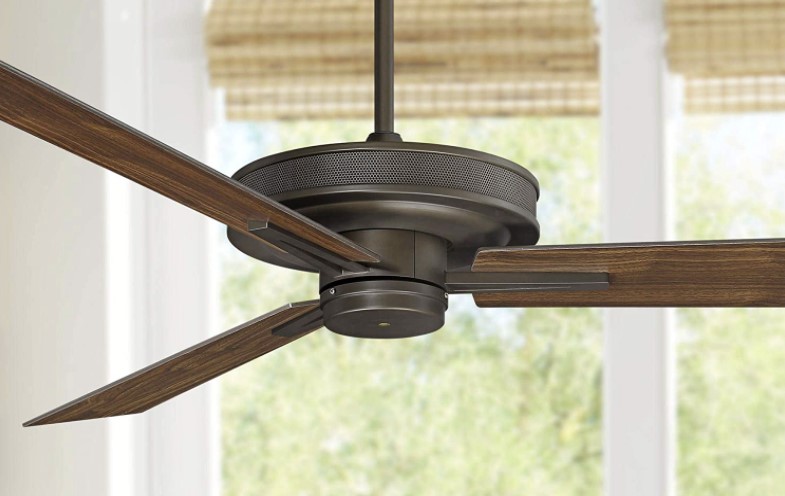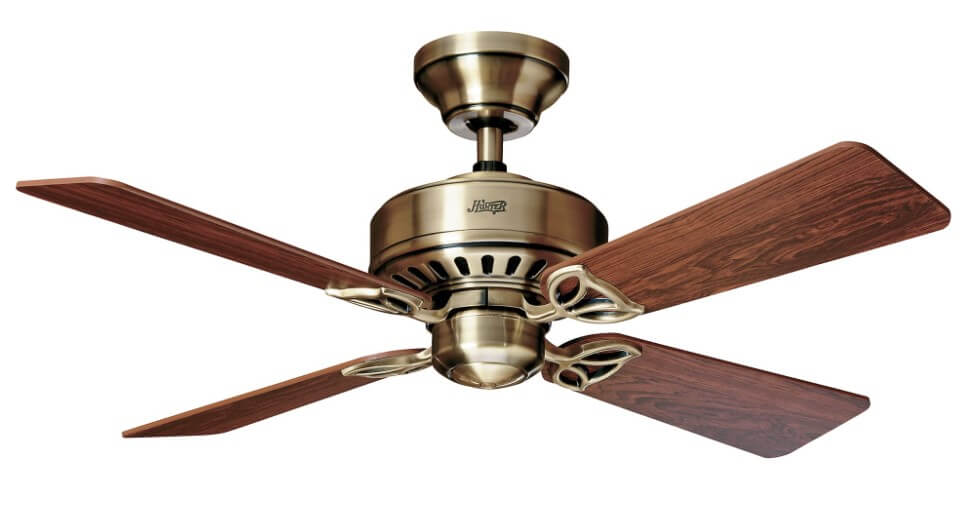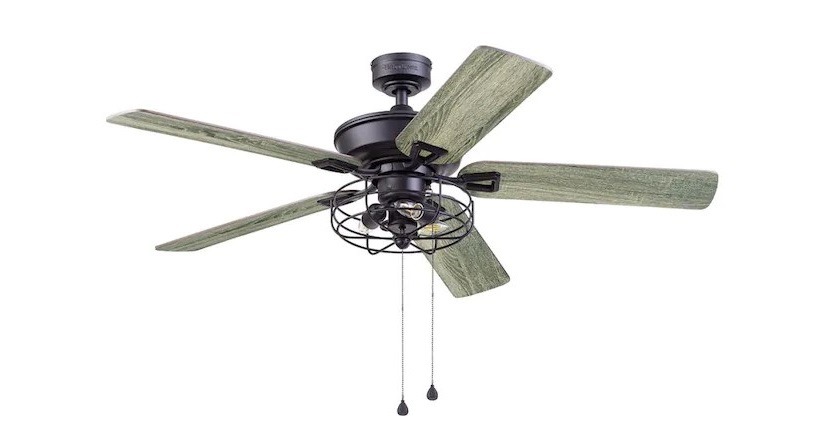How many blades should a ceiling fan have for best airflow? Does having more blades on a fan make it cool a room faster, or should you go with fewer blades? These are some of the top considerations you should make when purchasing a ceiling fan.
Most people believe that the more blades a fan has, the more airflow it will provide. However, this is not always the case.

A fan with fewer blades can produce just as much airflow as it spins faster due to reduced drain on the motor.
While the number of blades affects the airflow a fan produces, other factors such as speed, power usage, and noise are equally important.
This article will help you understand where more blades are effective in a ceiling fan and where they aren’t. We’ve also explained what you need to consider if you are looking for performance.
Contents
How does the number of blades affect a ceiling fan?
Are 3 blade fans better than 5 blades on a ceiling fan?
Or it would help if you went for a fan with the most number of blades.
When looking at the overall performance, the number of blades has minimal impact on the ceiling fan airflow.
New and improved technologies such as blade balance technology, more efficient blade shapes, and optimal blade pitch have more impact.
But this doesn’t mean that there is no difference in performance between fans with more blades and those with fewer. For example, a fan that has fewer blades will place less drag on the motor.
This means it can spin much faster and produce a higher airflow, which will help cool the room more quickly. Its less drag on the motor also means it consumes less power.
On the other hand, fans with more blades tend to be well balanced, creating less ambient noise. However, they can also generate more wind, especially if designed with a narrower blade-to-blade distance.
On the downside, the more the blades, the more drag they will create, leading to a slower motor and increased power consumption.
Pros and cons of different fan blade designs
These are the pros and cons of various blade designs to help understand exactly how the number of blades affects the ceiling fan:
1. Three blades

The three-blade fan design is the most common one you will find, whether for home or industrial use. This is because many people consider them to be the most optimal design when it comes to airflow.
Three-blade fans have less air drag, allowing the fan motor to spin faster without consuming too much power.
Their design can also have an aesthetic benefit. Fewer blades give off a minimalist look, which can be perfect if you prefer a less cluttered appearance.
Fans with three blades are perfect for your home or an office setting.
However, having three (or fewer) blades on your fan can have some disadvantages. The first one is that they are noisier.
Due to the faster spin, the blades move higher volumes of air at higher speeds, which can be pretty loud.
2. Four blades

The four-blade design is another available variation, primarily for residential fans. Many prefer four-blade fans because they are more aesthetically designed than three-blade fans.
They are also more balanced than three blades, allowing for a smooth and less noisy fan operation. They are perfect for use in the bedroom.
However, on the downside, four blades have more air drag than three blades. This means that they consume more power.
They aren’t fast either, meaning they’ll cool a room much slower.
3. Five blades fan design

One of the main selling points of a fan with five (or more) blades is its balance. The fan spins smoothly, and they often have less ambient noise.
If you’ve been trying to compare 3-blade and 5-blade fans, you will find the latter quieter.
Five-blade fans also produce more airflow consistently due to the reduced distance between the blades. Therefore, it cools the room with a gentle breeze, unlike the gust created by fans with fewer blades.
Unfortunately, increasing the number of blades also increases the drag created by the fan as it spins. As a result, the motor can spin slower, and your fans consume more power.
Another disadvantage with increased blades is that it increases the ceiling fan cost.
Which is the most efficient fan blade design?
So, which type of ceiling fan should you purchase? Should you go with fewer blades, or are 5 or 4 fan blades better than 3?
In the end, it all comes down to preference. Each blade design comes with its unique advantages and drawbacks.
For example, five blades are better if you prefer a more balanced and quiet fan. However, three blades are better if you desire increased fan speed and affordability.
Other factors that affect ceiling fan performance?
While the number of blades impacts a ceiling fan, it is not the only factor you should consider.
Other factors that affect a fan’s performance include:
1. Material of the blade
The material of the blade is just as important when it comes to performance.
Heavy material will create more resistance on the fan motor, thus drawing more power while reducing the spinning speed.
On the other hand, a lighter material will spin much faster while reducing power consumption.
2. Blade pitch
The blade pitch refers to the blade angle from its relative parallel position to the ceiling or the floor.
The pitch affects the balance of the ceiling fan and the airflow produced by the blades when spinning.
A slightly higher pitch (curve) will move more air, thus cooling the room faster.
3. Motor wattage
Motor wattage is another critical factor to consider. A powerful motor allows the blades to spin faster, thus producing more airflow.
Unfortunately, the increase in wattage also leads to increased power consumption.
Wrapping up
When purchasing a ceiling fan, one of the things you will need to consider is the number of blades. There are many blade design variations on the market, the most common being three, four, or five blades.
Each blade design has pros and cons, with fewer blades being faster but noisier.
On the other hand, more blades are smoother and quiet but more expensive and slower.
However, aside from the number of blades, several other factors affect performance —for example, blade material, pitch, and motor wattage.
Combined with the blade designs, these factors can compensate for the drawbacks of having fewer or more blades on your ceiling fan.
